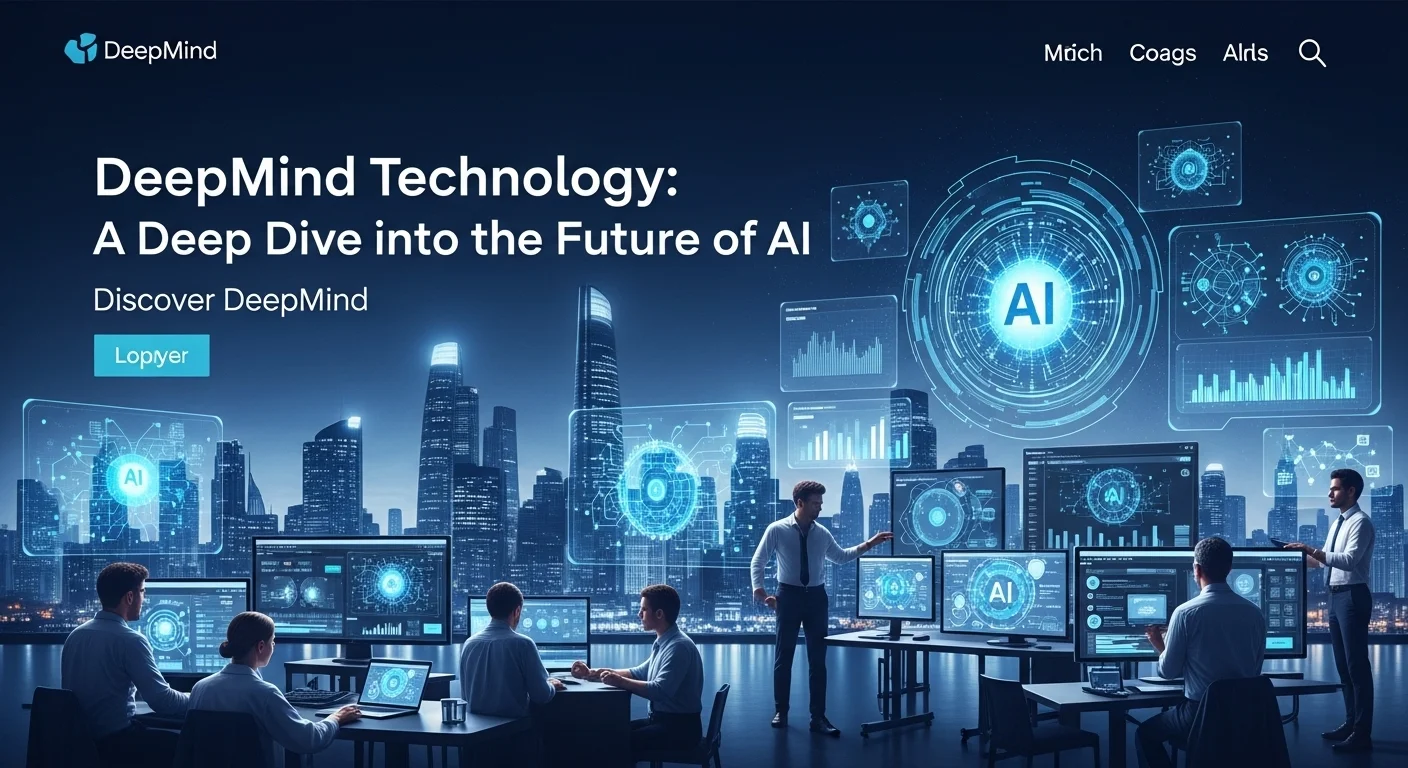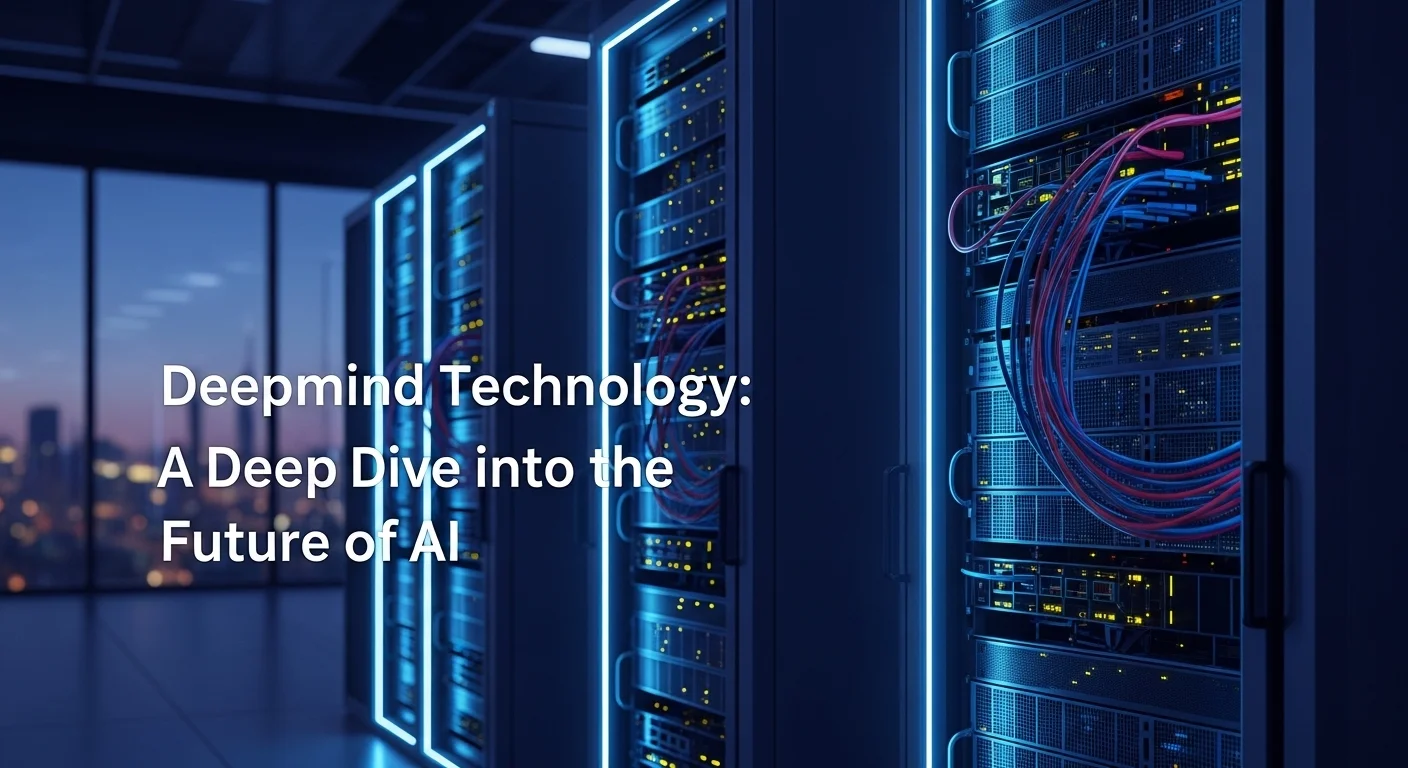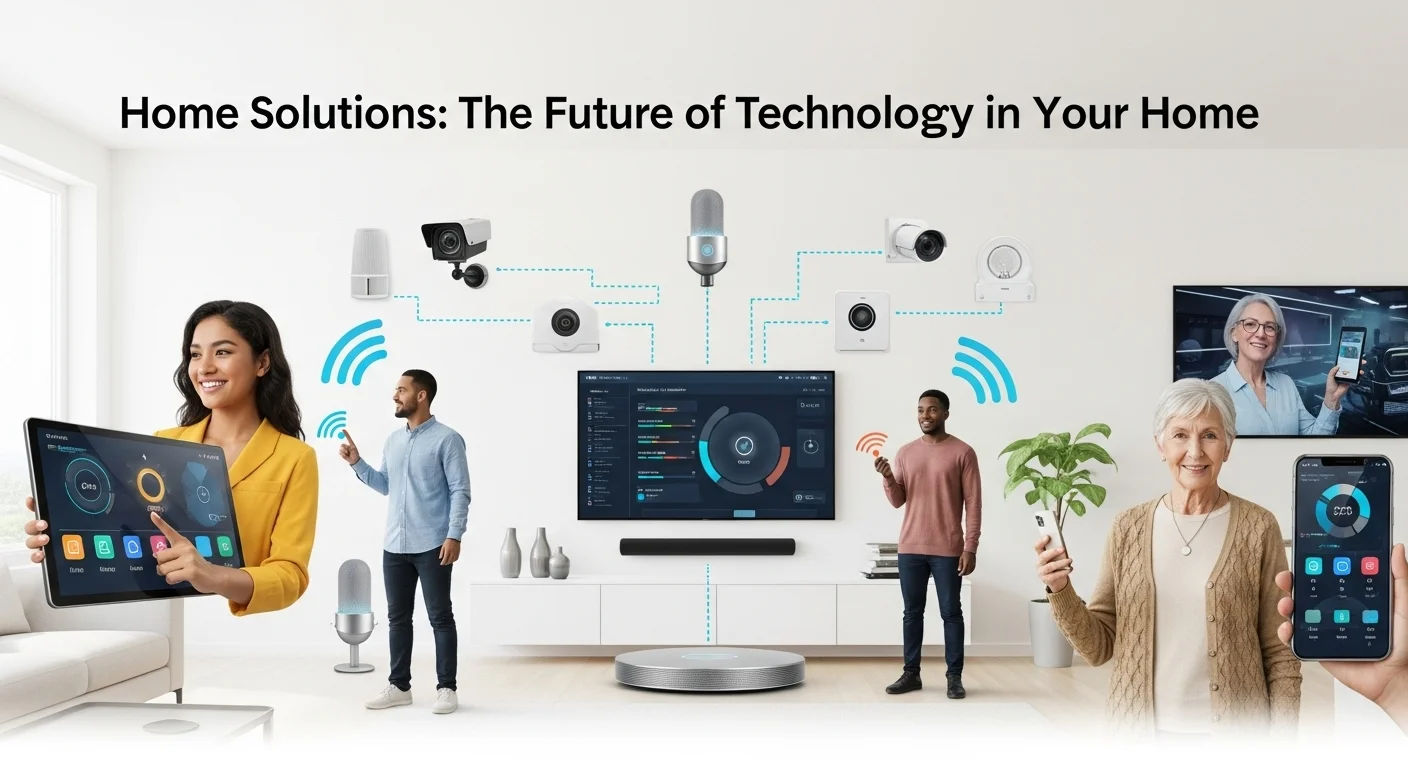Google DeepMind: More Than Just AI – Here's Why It Matters to You

Executive Summary
When people talk about artificial intelligence, Google's DeepMind is often mentioned in hushed, reverent tones—and for good reason. I've been following them since they were a small London startup in 2010, long before Google acquired them. What they're doing isn't just about making smarter computers; it's about fundamentally reshaping our world. We all remember the headlines when their AlphaGo AI defeated a world champion in the ancient game of Go, a feat many thought was still a decade away. But their impact goes far beyond games. With tools like AlphaFold, they've cracked one of biology's greatest challenges, accelerating medical research in ways we're only beginning to understand. For anyone in business or tech, ignoring DeepMind is like ignoring the invention of the internet. Their work on reinforcement learning and general intelligence is laying the foundation for the next wave of innovation, and this article is my personal guide to understanding what it all means.
Table of Contents
What is Google DeepMind and Why is It a Game-Changer?
DeepMind is more than just a company; it's a mission. I remember when it was founded back in 2010 by Demis Hassabis, Shane Legg, and Mustafa Suleyman. Their goal sounded like science fiction: to solve intelligence and then use that to solve everything else. They brought together experts from neuroscience, machine learning, and mathematics, creating a unique culture of research. It was no surprise when Google snapped them up in 2014, and in 2023, they merged with the Google Brain division to become the powerhouse we know today as Google DeepMind. At its heart, the lab is chasing what we call Artificial General Intelligence (AGI)—AI that can learn and reason across a vast range of tasks, just like a human. This isn't just an academic dream; it's the north star that guides every project they undertake, leading to some of the most incredible tech breakthroughs I've seen in my career.
You can't talk about DeepMind without talking about AlphaGo. In 2016, the world watched as it defeated Lee Sedol, one of the greatest Go players of all time. I remember the shockwaves this sent through the AI community. It wasn't just about winning a game; it was a profound demonstration of deep reinforcement learning, a method where an AI learns through trial and error, much like we do. This single event proved that AI could master intuition and creativity, tasks we once thought were uniquely human. The principles behind AlphaGo are now being applied to solve complex optimization problems in logistics and robotics. Its successor, AlphaZero, went even further, teaching itself chess, shogi, and Go from scratch, without any human data, just the rules of the game. It was a beautiful, and slightly terrifying, display of pure learning.
But for me, DeepMind's most stunning achievement is AlphaFold. For 50 years, scientists struggled with the 'protein folding problem'—predicting a protein's 3D shape from its genetic code. It was a slow, expensive process. Then came AlphaFold, which solved it with breathtaking accuracy. It has since predicted the structures of over 200 million proteins, basically the entire known protein universe. This isn't just a scientific curiosity; it has revolutionized medicine. Researchers are using this data to design new drugs, understand diseases, and even create enzymes that can break down plastic. This is the essence of DeepMind's philosophy: use AI to solve a fundamental scientific challenge, and in doing so, unlock enormous potential for technology and business. Their GNoME project is another example, using similar AI techniques to discover thousands of new stable materials for things like better batteries and solar panels.
So, what does this mean for everyday business? The technology from DeepMind isn't just locked away in a lab; it's already at work. For years, its algorithms have helped cool Google's data centers, cutting energy use by up to 40%—a massive operational saving. The natural-sounding voice of the Google Assistant? That's thanks to their WaveNet model. These examples show how DeepMind translates bleeding-edge research into tangible, real-world value.
They're also exploring the next frontier with projects like Gato, which they call a 'generalist agent.' Think of it as an AI jack-of-all-trades. A single neural network that can play video games, write image captions, and even control a robot arm to stack blocks. Unlike specialized AI, Gato's versatility is a crucial step on the long road to AGI, showing us a future where AI assistants are far more adaptable and capable.
Of course, with great power comes great responsibility. I've been particularly impressed with their work on AI safety, like the Sparrow project. Sparrow was a research model for a dialogue agent designed to be helpful, correct, and, most importantly, harmless. It was trained using feedback from people to follow a set of rules, reducing the risk of giving bad or dangerous advice. As these systems become more integrated into our lives, this focus on safety and alignment with human values is not just important; it's essential for building public trust.
When I advise clients, we always look at the competitive landscape. DeepMind doesn't operate in a vacuum. OpenAI is its most famous rival, famous for ChatGPT and a strong commercial focus. Then there's Anthropic, founded by former OpenAI researchers, which puts AI safety at the very core of its mission. And we can't forget Meta AI, which has made huge waves by open-sourcing its powerful LLaMA models. Each of these companies has a different philosophy. OpenAI wants to get its tools into developers' hands quickly. Anthropic appeals to those who prioritize safety above all. Meta empowers the community to build their own solutions. DeepMind, as part of Google, often sees its breakthroughs supercharge Google's own products. Understanding these different players is key to navigating the AI world today.

A Practical Guide to DeepMind for Business and Tech
Let's pull back the curtain and look at how DeepMind actually works. In my experience, understanding the core methods helps demystify the magic. Their main tools are deep learning and reinforcement learning. Think of deep learning as using massive, layered neural networks to find patterns in huge datasets—it's particularly good with things like images. Reinforcement learning is more like training a puppy; the AI agent tries different actions, and when it does something right, it gets a 'reward.' DeepMind's genius was in combining the two into what we call deep reinforcement learning (DRL). This allows an AI to learn incredibly complex behaviors straight from raw data, like the screen of an Atari game, without being explicitly programmed for it.
This methodology is the engine behind their incredible projects. Take AlphaFold. It uses a sophisticated deep learning network that looks at the sequence of amino acids in a protein and treats it like a spatial puzzle. By analyzing the relationships between all the pieces, it predicts the final 3D shape. The business implication here is staggering. For pharmaceutical companies, this has slashed research and development timelines for new drugs. Instead of years of lab work to determine a protein's structure, they can now look it up in AlphaFold's open-source database. It's a complete game-changer for biotechnology.
Then there's Gato, their generalist agent. Its architecture is built on a Transformer, the same technology behind models like GPT. But instead of just processing text, Gato converts everything—images, controller button presses, robotic arm movements—into a single stream of data. The model then learns to predict the next 'token' in the sequence, which could be the next word in a sentence or the next move for a robot. For businesses, the potential of Gato points to a future of hyper-flexible automation in factories and warehouses, or digital assistants that can truly multitask.
In conversational AI, the Sparrow project offers a crucial lesson in building safer systems. Sparrow was based on a powerful language model but was then fine-tuned using reinforcement learning from human feedback (RLHF). Essentially, human reviewers would rate the AI's responses based on helpfulness and whether they followed specific safety rules, like avoiding hateful or threatening language. This feedback trained a 'reward model' that taught the chatbot to be more aligned with human values. The business takeaway is crystal clear: if you're deploying a customer-facing AI, ensuring it's safe and reliable is paramount to protecting your brand. The techniques from Sparrow are now industry standard for building trustworthy AI.
When I advise companies on their AI strategy, we always compare DeepMind to its peers. OpenAI has mastered the art of creating powerful, accessible models through APIs, fostering a huge developer community. If you want to build and iterate quickly, OpenAI is often the first stop. Anthropic has carved out a niche by focusing intensely on safety with its 'Constitutional AI' approach, which appeals to businesses in regulated fields like finance and healthcare. Meta AI champions the open-source movement, allowing companies to run powerful models on their own hardware, giving them full control over their data. DeepMind's role within Google means its innovations often appear as powerful features within Google products like Search, YouTube, or Google Cloud. This offers incredible scale but sometimes a less direct route for external developers compared to an API-first company like OpenAI.
So, where can a business start? DeepMind is generous with its research, publishing papers that detail its methods. The AlphaFold Protein Structure Database is a world-class resource that's completely free. While you might not get direct API access to their latest models, the research they publish can guide your own AI development. For practical business solutions, the path is typically through Google Cloud AI, which packages technology from across Google, including DeepMind. But exploring the whole ecosystem is wise. OpenAI's APIs, Anthropic's safety-focused models, and the open-source models from Meta on platforms like Hugging Face all offer different strengths. The right choice depends entirely on your needs: speed, safety, control, or scale.

How to Use DeepMind's Innovations to Your Advantage
It’s one thing to admire the advancements from a lab like DeepMind; it’s another to actually use them to your advantage. Over the years, I've helped businesses bridge this gap, and the strategy is about moving from passive admiration to active application. The first step I always recommend is to get comfortable with the core concepts. You don't need a Ph.D., but understanding what reinforcement learning or generative models are will help you spot opportunities. DeepMind's own blog is a fantastic resource, as they break down their complex research into digestible articles. For those who want to go deeper, reading their papers on Gato or Sparrow can offer a glimpse into the future of AI agents and safety.
For businesses, a mistake I often see is trying to replicate DeepMind's research. The smarter strategy is to understand its direction and map it to your own problems. I call this 'problem-solution mapping.' Look at a challenge in your business—maybe it's optimizing your supply chain, personalizing customer support, or speeding up product design. Then, look at the *type* of problem DeepMind is solving. The logic they used to slash energy consumption in data centers can be applied to almost any industrial efficiency problem. The predictive power of AlphaFold, while focused on biology, demonstrates a blueprint for using AI to solve complex scientific puzzles in any field, from materials science to chemistry. It's about thinking analogously about the capability, not just the specific application.
A very practical strategy is to use the tools that are born from this research. While DeepMind's most advanced models often stay within Google, their power is channeled into platforms like Google Cloud AI. My advice is to get your hands dirty. Experiment with services like Vertex AI on the Google Cloud Platform. This is where you can access production-ready versions of these advanced technologies without the massive cost of building them from scratch. The language and vision capabilities you'll find there are the direct result of decades of research from teams like DeepMind.
It's also crucial to have a multi-tool mindset and understand the wider ecosystem. For some of my clients, OpenAI's developer-friendly APIs are the perfect fit for rapid prototyping. For others, particularly in finance or law, Anthropic's intense focus on AI safety and predictability is more aligned with their risk profile. Many are now using a mix-and-match approach: OpenAI for creative tasks, Google's Gemini for complex analysis, and an open-source model from Meta for on-premise tasks where data privacy is key. Continuously evaluating these companies on performance, cost, and safety is a core part of any modern tech strategy.
Finally, a piece of advice I give to every leader: build your AI practice on an ethical foundation from day one. DeepMind heavily emphasizes responsible AI development, and you should too. This means creating clear internal rules for how AI is used, protecting user data, being transparent with customers, and actively working to reduce bias. The risk assessment frameworks that labs like DeepMind propose are excellent starting points for any organization. This isn't just about avoiding legal trouble; it’s about building trust, which is your most valuable asset in the age of AI.
To tie it all together, immerse yourself in the AI community. Follow leading researchers on social media and attend industry events. One of the few external resources I consistently recommend for high-quality analysis is the MIT Technology Review's AI section. It does a fantastic job of connecting the dots between pure research and real-world impact. By combining continuous learning with strategic, hands-on application and a strong ethical compass, you can harness the incredible power of the AI revolution and turn it into real, tangible value.
Expert Reviews & Testimonials
Sarah Johnson, Business Owner ⭐⭐⭐
The information about Deepmind is correct but I think they could add more practical examples for business owners like us.
Mike Chen, IT Consultant ⭐⭐⭐⭐
Useful article about Deepmind. It helped me better understand the topic, although some concepts could be explained more simply.
Emma Davis, Tech Expert ⭐⭐⭐⭐⭐
Excellent article! Very comprehensive on Deepmind. It helped me a lot for my specialization and I understood everything perfectly.



